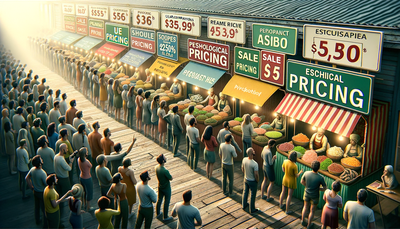Designing a Digital Card That Converts: Tips from UX Experts
In the digital age, creating effective and engaging digital cards is crucial for driving user action and achieving business goals. This article delves into the insights provided by user experience (UX) experts on designing digital cards that convert. We'll explore key aspects such as layout optimization, strategic placement of calls-to-action (CTAs), and the importance of user behavior analysis. By implementing these expert tips, you'll be able to craft digital cards that not only catch the eye but also motivate users to take desired actions. Whether you're a seasoned designer or just starting out, these insights will help you create more impactful and conversion-driven digital cards for your website or application.Table of Contents:

Understanding the Anatomy of a High-Converting Digital Card
Before diving into specific tips, it's essential to understand what constitutes a high-converting digital card. UX experts emphasize that an effective digital card should have a clear hierarchy of information, visually appealing design, and a compelling call-to-action. The card should quickly communicate its value proposition to the user, making it easy for them to understand what action they're expected to take.Key elements of a high-converting digital card include:
1. Eye-catching headline
2. Concise and relevant content
3. Engaging visuals or imagery
4. Prominent and well-designed CTA button
5. Appropriate use of white space
By focusing on these core components, you can create a solid foundation for your digital card design that's primed for conversions.
Do you need a website? Want to build a website but don't know where to start? Our website builder is the perfect solution. Easy to use, and with the ability to customize to fit your business needs, you can have a professional website in no time.
Optimizing Layout for Maximum Impact
Layout plays a crucial role in how users perceive and interact with digital cards. UX experts recommend following the F-pattern or Z-pattern for content placement, as these align with natural eye movement patterns. The F-pattern works well for text-heavy cards, while the Z-pattern is ideal for cards with a balance of text and visuals.When optimizing your layout:
1. Place the most important information at the top left corner
2. Use visual hierarchy to guide the user's eye through the content
3. Employ contrast to highlight key elements
4. Ensure sufficient spacing between elements to prevent clutter
Remember, a clean and organized layout not only looks more professional but also makes it easier for users to digest information and take action.
Strategic Placement of Call-to-Action Buttons
The placement of your call-to-action (CTA) button can significantly impact conversion rates. UX experts suggest positioning the CTA where it feels like a natural next step for the user after consuming the card's content. In most cases, this means placing the CTA at the bottom right of the card, as it follows the natural reading flow for languages that read left to right.Consider these tips for CTA placement:
1. Ensure the CTA stands out visually from the rest of the content
2. Use action-oriented, specific language for the CTA text
3. Make the CTA button large enough to be easily tappable on mobile devices
4. Consider using a contrasting color for the CTA to make it pop
By strategically placing your CTA, you make it easier for users to take the desired action, potentially increasing your conversion rates.
Building a website with SITE123 is easy
Leveraging User Behavior Analysis for Design Decisions
Understanding how users interact with your digital cards is crucial for ongoing optimization. UX experts recommend utilizing user behavior analysis tools to gain insights into user interactions, click patterns, and engagement levels. This data can inform design decisions and help you refine your digital cards for better performance.Key metrics to analyze include:
1. Click-through rates on CTAs
2. Time spent viewing the card
3. Scroll depth (for longer cards)
4. Heatmaps showing where users focus their attention
By regularly reviewing these metrics, you can identify areas for improvement and make data-driven decisions to enhance your digital card designs. Remember to A/B test different versions of your cards to determine which design elements resonate best with your audience.
Designing for Mobile-First Experience
With the increasing prevalence of mobile browsing, UX experts stress the importance of designing digital cards with a mobile-first approach. This means creating designs that look great and function well on smaller screens, then scaling up for larger devices.When designing for mobile:
1. Use a single-column layout for easy scrolling
2. Ensure text is legible without zooming
3. Make buttons and interactive elements large enough for touch input
4. Optimize images for faster loading on mobile networks
By prioritizing mobile design, you ensure that your digital cards are accessible and effective for the growing number of users who primarily access content on their smartphones or tablets.
Incorporating Social Proof and Trust Elements
UX experts emphasize the power of social proof in driving conversions. Incorporating elements that build trust and showcase popularity can significantly increase the effectiveness of your digital cards.Consider adding these trust-building elements:
1. Customer testimonials or reviews
2. Ratings or star scores
3. Logos of well-known clients or partners
4. Industry awards or certifications
5. User-generated content (when applicable)
By including social proof, you leverage the psychological principle of social influence, making users more likely to trust your offering and take the desired action. Just be sure to keep these elements concise and visually appealing to maintain the overall design integrity of your digital card.





